TLD Staging
Volume 14, Issue 2 - March 2024
Editor’s Note:
Editor’s Note: Time has sprung forward as we transition into early spring with longer days and warmer weather. We welcome the blossoming of colorful flowers and greenery in our gardens and the opportunity to be outside amidst the pleasant temperatures and burgeoning nature. Plants burst into bloom, and there is a sense of excitement and anticipation for the warmer months ahead.
Spring also returns with the 12th anniversary of the Great Tomato Plant Sale. In this issue, Robin Moore describes the “All Hands On Deck” effort volunteers need to make the sale successful. Liz Rottger describes in an article about the GTPS’s early history how “a modest sale of 3,000 plants grew into over 37,000 plants, including 73 varieties of heirloom and hybrid tomatoes.”
Terri Takusagawa describes opportunities to complete your CE requirements, including workshops at Our Garden, two Lunchbox webinars and other events. Laura Brainin-Rodriguez also highlights the return of what is shaping up to be an exciting season of Ask A Master Gardener booths. Consider attending their kick-off event on March 25 at Bisso Lane. Jan Manns reports on the Family Garden Bed at Our Garden, which started six years ago. She describes its early history and the many lessons learned.
The Help Desk returns with new questions from a local gardener about mystery mushrooms in their garden. Identified as cup fungi in the Pezizaceae family, these mystery mushrooms perform an essential ecological role but are also harmful if eaten.
Liz Rottger and I both write about seeds. I discuss seed viability and ways to check for it, while Liz reviews Thor Hanson’s The Triumph of Seeds, which discusses seed vaults and answers “some of those vexing questions gardeners always have.”
Looking back to this past fall, Dawn Kooyumjian and David George summarize the 2023 UC Master Gardener Conference, which featured keynote speakers, panel discussions, and breakout sessions on the latest horticulture research and best practices.
Finally, Paige Shoemaker provides essential information regarding our area’s invasive fruit fly quarantine. She writes, “This invasive pest infests and can ruin over 300 types of crops.”
Simone Adair, Editor
The Latest Dirt - March 2024
-
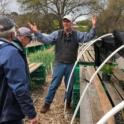
2024 Great Tomato Plant Sale Needs You
By Robin Moore
If you haven’t heard, the Great Tomato Plant Sale will have sales in all three county areas for the first time since the COVID-19 lockdown! East County is ready to rock and roll in 2024 after a total garden redo!What does this mean to you? It means ALL-HANDS–ON-DECK, please! There are tons of volunteer opportunities, with tasks in Central, East and West Counties. We need volunteers before, during, and after the sale dates. Watering is one of the most critical volunteer opportunities for the GTPS, and we hope you’ll consider joining the team!
-
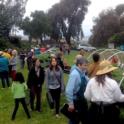
The Tomato Sale That Grew
By Liz Rottger
When did UC Master Gardeners of Contra Costa hold its first tomato sale? That depends on how you define “first.” In 2010, CoCoMGs took over a small, neglected vegetable garden next to the Contra Costa Times building on Shadelands in Walnut Creek. Joan Morris, the Times nature columnist, facilitated this takeover. Janet Miller and Helen Erickson stepped forward to lead this new project, and for the next two years, they held small plant sales at what was now christened by Joan as “Our Garden.” Those sales would be CoCoMGs “first” plant sales.
-
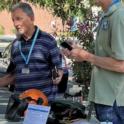
Continuing Education: Find Opportunities; Complete Your Hours!
Article & Photos By Terri Takusagawa, Continuing Education Project Lead
Spring is in the air, and it’s a great time to work on Continuing Education requirements for the fiscal year. Remember, active UC Master Gardener volunteers (other than First Year volunteers) are required to complete and log 12 CE hours by June 30. But no need to leave it to the last minute!
The CE team provides plenty of interesting and relevant CE options to help with your requirement. More importantly, the opportunities provide knowledge and skills to extend science-based information to residents of Contra Costa County. We use a three-pronged approach to delivering CE opportunities: internally produced CE events, announcements of approved CE events from other organizations, and dozens of self-paced options.
-
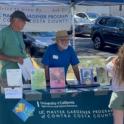
The Return of AAMG!
By Laura Brainin-Rodriguez
We have an exciting Ask a Master Gardener season coming up! AAMG is unique in that we reach Contra Costa County residents as they go about their lives at Farmers Markets, Our Garden, and single-day events throughout the county. Our usual season runs from April to October.
Three farmers markets, Concord, Moraga, and Pinole, have decided to start in March instead of April to better promote the Great Tomato Plant Sale. All AAMG events are posted on the Volunteer Management System Calendar on the 10th of the prior month.
-
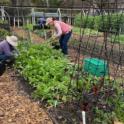
Family Garden Bed…The Story
By Jan Manns
The Family Garden Bed at Our Garden Walnut Creek was initiated six years ago when UC Master Gardeners Monika Witte and Janet Miller proposed dedicating one of the 30 garden plots as a tangible example of what a family can accomplish in their own backyard. The idea mushroomed.
The plan evolved when another UC Master Gardener, Shelley Christianson, poured her efforts into the square-foot gardening concept, resulting in heightened production. Over the past few years, this single 5’x20’ plot has yielded nearly 500 pounds per year. Added to the harvest from Our Garden, these pounds contributed to the 14,000-20,000 pounds donated yearly to the Monument Crisis Center.
-
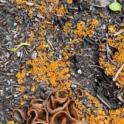
Help Desk Solves Fungi Mystery
By Sara Hoyer
The Help Desk recently received the following questions from a local gardener about mystery mushrooms in their gardens. Are the attached photos depicting mushrooms? Are these growths harmful to my vegetable plants or to me? If so, how do I get rid of them?
Thank you for contacting the UC Master Gardener Program help desk with your questions about the odd-looking growths in your garden. You asked if the growths are mushrooms and whether they may harm you or your plants. Your photos are excellent making it very easy to identify them as fungi in the Pezizaceae family. These are commonly known as cup fungi. This fungi family produces mushrooms that grow in the shape of a cup. There are over 200 species of cup fungus. There are over 200 species of cup fungus.
-

Seed Viability for Seed Savers
By Simone Adair
The Svalbard Global Seed Vault in Norway is “the backup insurance policy for all the seed banks worldwide,” said its founder, Cary Fowler. The Vault, which stores 500 million seeds, is naturally three to four degrees below zero Fahrenheit. “The Seed Vault could preserve most major food crops’ seeds for hundreds of years. Some, including those of important grains, could remain viable for thousands of years,” Fowler wrote in The Global Crop Diversity Trust paper.
National seed banks monitor their supply constantly; Fowler says, “When they see that a seed sample is declining in its viability, they will take some seeds out, grow them in the real world, and multiply them.”
-
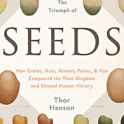
The Triumph of Seeds: A Book Review
By Liz Rottger
Think of the fierce energy concentrated in an acorn! You bury it in the ground, and it explodes into a giant oak! Bury a sheep, and nothing happens but decay.
--George Bernard Shaw,
The Vegetarian Diet According to Shaw (1918)Several years ago, I joined a group of volunteers called “Seedy Friends” at the East Bay Regional Botanic Garden in Tilden to help collect seeds from some of its native plants—columbine, milkweeds, Clarkias, Phacelias, poppies, etc. I soon had a healthy respect for all the diverse strategies plants have developed to protect their ‘young’ and assure their distribution. Collecting the seeds was only half the job, the easy part. Cleaning them was a whole other sea of hard work—long, tedious hours spent shaking different-sized scalper screens and tiny-holed sieve screens to get even a few clean seeds we could package up and sell for $2/pkg at the Garden. I thought $25/pkg might have been a fairer price for all our work!
-
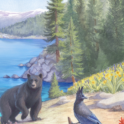
2024 UC Master Gardener Conference Great Success
By Dawn Kooyumjian and David George
UC Master Gardeners from around the state converged on the Lake Tahoe region last October for the triennial 2023 UC Master Gardener Program conference. The conference occurred Oct. 2 – 6 at the Granlibakken Tahoe resort in sparkling Tahoe City, California.
We met to discuss the latest horticultural research, best practices, and new techniques to improve gardening success. The conference featured keynote speakers, panel discussions, and breakout sessions that provided a wealth of information for attendees. Because of the COVID-19 pandemic shutdown, this was the first in-person UC Master Gardener conference in six years!
-
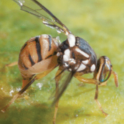
Invasive Fly Quarantine In Our Area
By Paige Shewmaker
On behalf of the California Department of Food and Agriculture, I am providing you with some informational resources for residents regarding an invasive fruit fly quarantine in your area.
The Oriental fruit fly has been found in parts of Contra Costa County, including the Brentwood area. This invasive pest infests and can ruin over 300 types of crops, ultimately making them unfit for human consumption. A quarantine has been established in the area to help eliminate the pest.
-

CoCoMGs Apologize for Gold Badge Ommission
UC Master Gardeners and Gold Badge recipients Titania Buchholdt and Wendy Kraft.
















